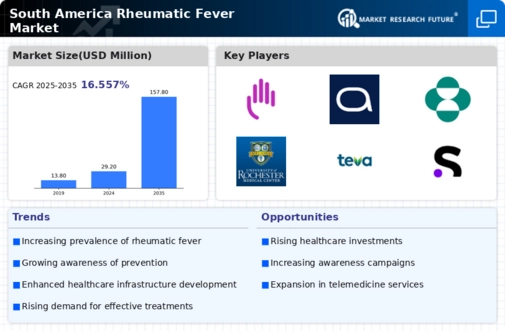The competitive insights of the South America Rheumatic Fever Market reveal a landscape characterized by strategic positioning, product development, and effective delivery of healthcare solutions aimed at combating rheumatic fever. The market is driven by a rising incidence of rheumatic fever, particularly in socially and economically challenged regions, prompting the need for enhanced healthcare services and interventions. Key players have been focusing on understanding local epidemiology, tailoring their offerings to meet regional health needs, and establishing strong collaborations with local healthcare authorities to promote awareness and treatment options.
This dynamic environment necessitates continuous innovation and adaptability among firms to stay competitive and effectively address the complexities of this condition.
GlaxoSmithKline has established a strong foothold in the South America Rheumatic Fever Market, bolstered by its extensive portfolio of pharmaceutical and vaccine products that address infectious diseases and related complications. The company has leveraged its experience in research and development to bring about new therapeutics tailored to the needs of rheumatic fever patients in this region. With a commitment to public health and a robust distribution network, GlaxoSmithKline facilitates effective access to medications and preventive measures aimed at reducing the burden of rheumatic fever.
Furthermore, the company’s collaborations with local health agencies enhance its presence and ensure alignment with public health goals, creating a solid platform for its growth in this market.
Amgen's presence in the South America Rheumatic Fever Market is marked by its commitment to biosimilars and innovative therapies that cater specifically to chronic diseases and conditions exacerbated by rheumatic fever. With a focus on expanding its product offerings, Amgen has developed medications that are crucial for managing the complications associated with rheumatic fever, further establishing itself as a key player in this regional market. The company has undertaken strategic mergers and acquisitions to enhance its operational capabilities and market reach, allowing it to deliver effective treatments to communities.
Furthermore, Amgen's emphasis on research and collaboration has positioned it to respond efficiently to the unique healthcare challenges in South America, helping to further bolster its reputation and efficacy in treating rheumatic fever outcomes.























Leave a Comment